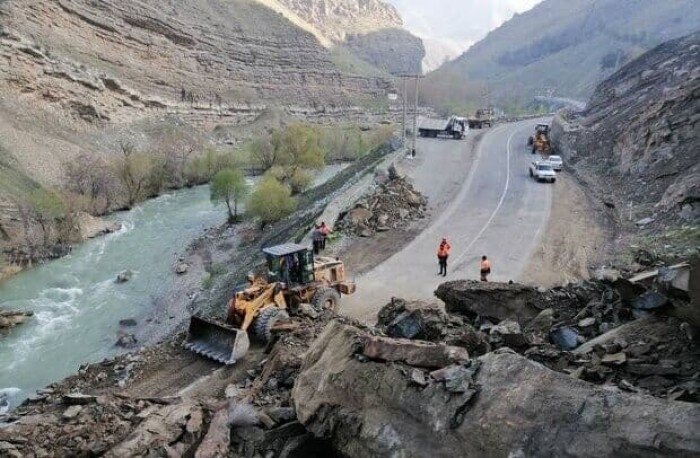Doab landslide in Haraz highway: a mining-induced environmental risk

A debris slide occurred in the afternoon of April 2, 44km south of Amol, Central Alborz Belt, Mazandaran province. The slide took place on the eastern edge of a major landslide along the eastern end of Nour valley, named "Razan".
The great Razan landslide was created originally in the past millennia, most probably during a major (M>7.0) earthquake along the North Alborz fault. However, the recent debris slide is evidently triggered by mining explosions for the exploitation of sand and gravel as construction materials.
The explosion operations had been stopped since March 20 (during Persian New Year vacations), but the explosions have been manipulated as a routine by March 20. This caused the landslide zone to be in critical condition and ready for collapse.
There was a rainy condition in the last 2 weeks of March and the landslide was finally triggered by multiple causes: A major earthquake in Central Alborz triggered the Razan landslide; mining explosions provoked the sliding zone and the spring rain provided the final triggering factor.
These Central Alborz landslides created the dried lakes of ancient landslide dams, which are highly used for the mining of sand and gravel as construction materials. These landslide zones when used for mining, are the most possible landslide risk zones for Haraz highway.
The green coverage of the Alborz belt has been decreased over the last decades. The environmental pollution by mining and man-made damage to the Hyrcanian Forests of the south Caspian zone is now a major environmental concern.
*Mehdi Zare is Professor of Engineering Seismology
